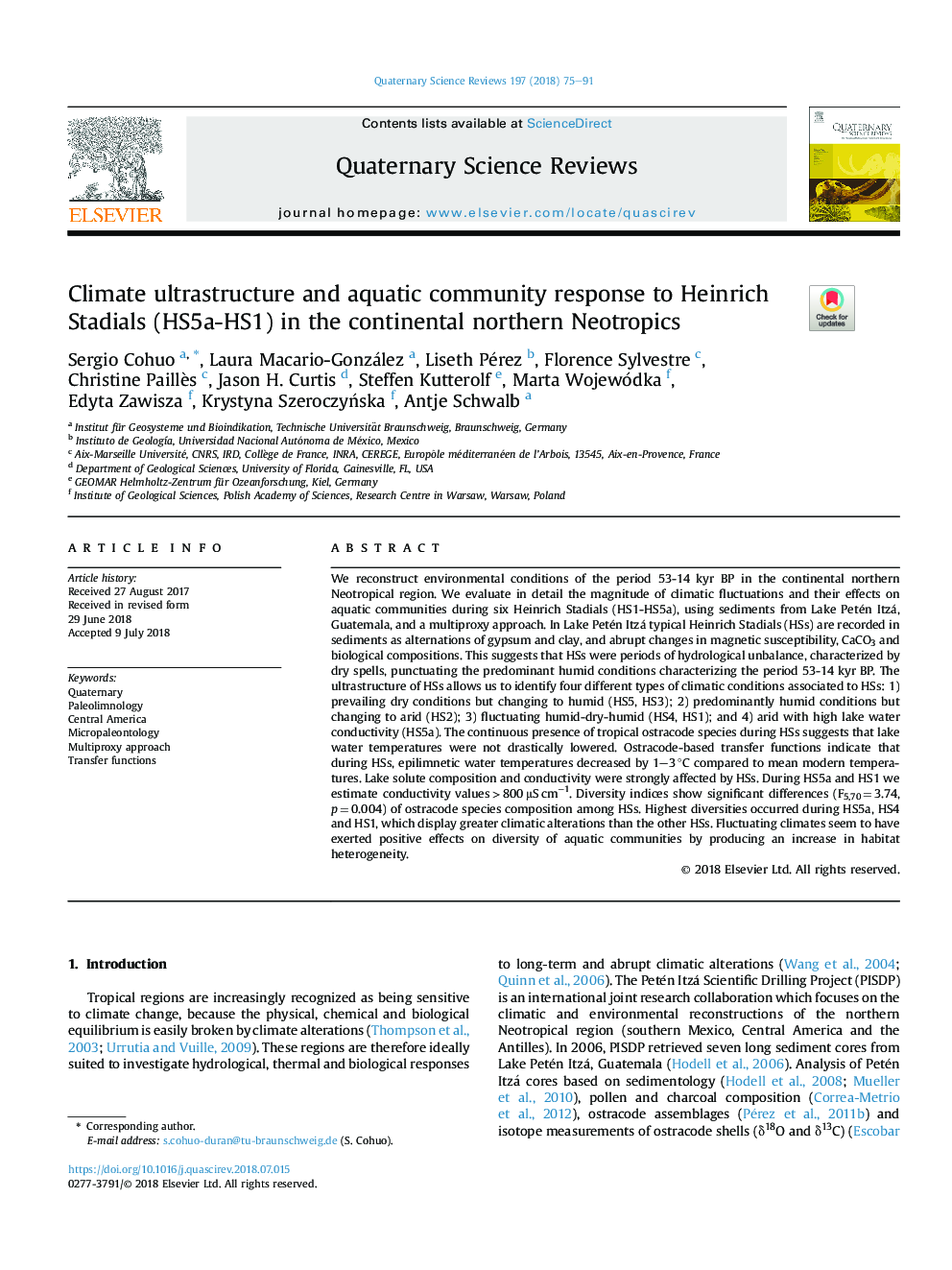| کد مقاله | کد نشریه | سال انتشار | مقاله انگلیسی | نسخه تمام متن |
|---|---|---|---|---|
| 10120980 | 1640738 | 2018 | 17 صفحه PDF | دانلود رایگان |
عنوان انگلیسی مقاله ISI
Climate ultrastructure and aquatic community response to Heinrich Stadials (HS5a-HS1) in the continental northern Neotropics
دانلود مقاله + سفارش ترجمه
دانلود مقاله ISI انگلیسی
رایگان برای ایرانیان
کلمات کلیدی
موضوعات مرتبط
مهندسی و علوم پایه
علوم زمین و سیارات
زمین شناسی
پیش نمایش صفحه اول مقاله

چکیده انگلیسی
We reconstruct environmental conditions of the period 53-14 kyr BP in the continental northern Neotropical region. We evaluate in detail the magnitude of climatic fluctuations and their effects on aquatic communities during six Heinrich Stadials (HS1-HS5a), using sediments from Lake Petén Itzá, Guatemala, and a multiproxy approach. In Lake Petén Itzá typical Heinrich Stadials (HSs) are recorded in sediments as alternations of gypsum and clay, and abrupt changes in magnetic susceptibility, CaCO3 and biological compositions. This suggests that HSs were periods of hydrological unbalance, characterized by dry spells, punctuating the predominant humid conditions characterizing the period 53-14 kyr BP. The ultrastructure of HSs allows us to identify four different types of climatic conditions associated to HSs: 1) prevailing dry conditions but changing to humid (HS5, HS3); 2) predominantly humid conditions but changing to arid (HS2); 3) fluctuating humid-dry-humid (HS4, HS1); and 4) arid with high lake water conductivity (HS5a). The continuous presence of tropical ostracode species during HSs suggests that lake water temperatures were not drastically lowered. Ostracode-based transfer functions indicate that during HSs, epilimnetic water temperatures decreased by 1-3â¯Â°C compared to mean modern temperatures. Lake solute composition and conductivity were strongly affected by HSs. During HS5a and HS1 we estimate conductivity valuesâ¯>â¯800â¯Î¼Sâ¯cmâ1. Diversity indices show significant differences (F5,70â¯=â¯3.74, pâ¯=â¯0.004) of ostracode species composition among HSs. Highest diversities occurred during HS5a, HS4 and HS1, which display greater climatic alterations than the other HSs. Fluctuating climates seem to have exerted positive effects on diversity of aquatic communities by producing an increase in habitat heterogeneity.
ناشر
Database: Elsevier - ScienceDirect (ساینس دایرکت)
Journal: Quaternary Science Reviews - Volume 197, 1 October 2018, Pages 75-91
Journal: Quaternary Science Reviews - Volume 197, 1 October 2018, Pages 75-91
نویسندگان
Sergio Cohuo, Laura Macario-González, Liseth Pérez, Florence Sylvestre, Christine Paillès, Jason H. Curtis, Steffen Kutterolf, Marta Wojewódka, Edyta Zawisza, Krystyna SzeroczyÅska, Antje Schwalb,